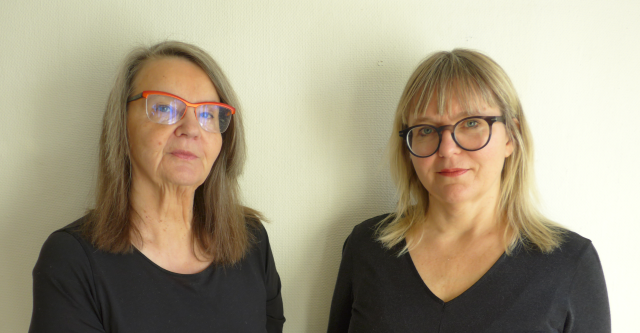In 1909, only a year after the original publication of Anne of Green Gables, Sweden was the first country in the world to publish a translation. The Swedish translation Anne på Grönkulla [Anne at Green Hill] by Karin Lidforss Jensen was published by C.W.K. Gleerup. Research shows that Jensen’s translation is abridged because of targeting an audience of younger readers than Montgomery’s original dual audience.1 The abridgement downplays Anne’s contemplative traits and her love of nature in favour of her resilience and humorous escapades and adds some Swedish flavour. Jensen’s iconic translation has remained in print until today with only minor modernizing language revisions. Over the years, two even more abridged retranslations were made, but they were quickly forgotten.2
Considering the lasting cross-generational popularity of Anne of Green Gables in Sweden, it is surprising that it has taken more than 110 years for Sweden to get an unabridged and faithful translation. But in April 2022 it finally happened, as the micro-publishing house Aglaktuq published a retranslation by Eva Ström, a Swedish poet and a Shakespeare translator. Her translation of Anne of Green Gables was edited by her daughter Anne Vogel, a linguist at Stockholm University, who recently published an article on the abridged Swedish translations of Anne of Green Gables.3

Montgomery translation scholar Laura Leden was thrilled to have a chance to chat with Eva Ström about her translation process and the relation between the old and new translation. The original conversation, which Laura has translated, was in Swedish.
Laura Leden (LL): What inspired your retranslation of Anne of Green Gables?
Eva Ström (ES): My daughter Anna and I made a wonderful long-awaited trip to Prince Edward Island in 2017. We explored the Montgomery sites on the island and visited the University of Prince Edward Island, where an array of Swedish editions of Anne of Green Gables was laid before us. We realized that it was more than fifty years since the last translation and that none had been complete and unabridged. This sparked the idea to do our own retranslation to be published by Anna and my other daughter Karin’s micro-publishing house Aglaktuq. It became a family project.
LL: What part did Jensen’s old translations play in your translation process?

ES: I have read the old translation numerous times and loved it, ever since I was about ten years old.4 I am sure I had Jensen’s translation at the back of my mind, but my ambition for the new translation was to make it as faithful to Montgomery’s original as possible. As my source text, I used the Penguin Classics edition. At the beginning of the translation process, I went back to Jensen’s translation a few times, but then I left it at my summer cottage. Later on, I instead went to Kristina Quintano’s splendid faithful Norwegian retranslation Anne fra Bjørkely (2014) for inspiration when I was struggling with a passage. Finally, to achieve our goal of a smooth and faithful text, my editor Anna and I did about eight rounds of editing, the final one involving meticulous comparison with Montgomery’s original text.
LL: You had very different ambitions compared to Jensen, who targeted children specifically rather than a dual audience as Montgomery did. Why did you choose to keep Jensen’s iconic title Anne på Grönkulla instead of choosing a more faithful title?
ES: We discussed different options. If my translation had been the first translation of the book, we would have called it Anne från Green Gables, keeping the English name for Green Gables as a recent French translation has done.5 We also considered Anne från huset med de gröna gavlarna [Anne from the house with the green gables], but it sounds a bit awkward. In the end, we decided to keep Jensen’s title, as it is such an established concept among Swedish readers. This makes sense from a marketing point of view, as we can ride on the popularity of the old translation. One of the earlier abridged retranslations made the same choice.
LL: Fair enough. Changing the title could upset and possibly estrange some readers as has happened in Poland, where Anne has also always lived at Green Hill because the first iconic Polish translation was based on Jensen’s Swedish translation. Earlier this year, a polemic, faithful retranslation with the title Anne z Zielonych Szczytów [Anne of Green Gables], rather than the classic Ania z Zielonego Wzgórza [Ania of Green Hill], caused a lot of controversy among Polish readers as many are very attached to their familiar version of the beloved book.6 Attracting attention by changing the title may have been one of the goals for this most recent Polish translation, as it was already the seventeenth Polish translation and the third faithful one.7
Would you consider your translation polemic in relation to Jensen’s translation?
ES: I would not call my translation polemic. I respect Jensen’s translation, which is of high literary quality and makes excellent stylistic choices despite being abridged. I just wanted to make my own linguistically modern version without omissions and thus do justice to Montgomery’s description of the landscape.
LL: As your translation is not abridged, it differs stylistically from Jensen’s translation made for younger readers. What kind of target audience did you have in mind for your translation? How did this influence the style of your translation?
ES: While I was translating, I did not think much about the target audience. I focused on Montgomery’s text. My ambition was to write for all ages, just as Montgomery did, without adjusting the language or contents as Jensen did. I wanted to be faithful to Montgomery’s style, characterized by long, winding sentences, seen particularly in her dreamy nature descriptions. Another important aspect of staying true to Montgomery’s style was creating Swedish equivalents for characters’ recurring expressions like Anne’s “scope for imagination” (utrymme för fantasin), Marilla’s “fiddlesticks” (snicksnack), and Rachel Lynde’s “that’s what” (det är då ett som är säkert). These important character descriptors in Montgomery’s text were entirely lost in Jensen’s translation.
LL: I am sure many Swedish readers will be glad to finally be able to quote Anne’s famous desire for scope for imagination.
I would first and foremost characterize your translation as a beautiful reading experience. What part did the landscape of our beloved Prince Edward Island play in your translation process?

ES: Our trip to PEI resulted in my developing a deeper connection with Montgomery’s landscape, both that in the fictional story and that associated with Montgomery as an author. I came to understand that nature is an important character in her books. The best part of the translation process was that I got to remain on PEI in my imagination for two years and relive the wonderful experience of the trip of my lifetime. I could wander in the Green Gables house as I had seen it in Cavendish. When I was translating the nature descriptions, I saw the landscape before me. This helped me recreate the names Anne gives elements in nature. After having seen the sparkling lakes and bays on PEI, Jensen’s Mörka speglande vågen (Dark Mirroring Wave) no longer seemed appropriate even though it is a beautiful and poetic name that I loved in my childhood. In my translation, Anne’s lake is called Sjön med det lysande vattnet (The Lake with the Shining Water).
LL: Do you have any plans for more translations of Montgomery’s books?
ES: I could consider doing more translations if we have the financial resources. But first we have to see whether the Anne of Green Gables translation project breaks even, as we do not have the same resources large publishing houses have. I would love to translate Anne’s House of Dreams or Rilla of Ingleside, which are two of my favourites. I would not mind doing all the Anne books in chronological order either. It could also be interesting to explore the Emily books.
LL: We hope the new translation will find its place alongside Jensen’s classic one. Anne of Green Gables is such an important book in Sweden, which is seen in the new translations having received such a positive reception in the Swedish press.8
Eva Ström was born in 1947 in Sweden and studied medicine and worked as a doctor until 1988, when she became a full-time writer. She has received several prizes for her poetry. She has translated into Swedish Shakespeare’s sonnets and most recently poetry by Nelly Sachs and Paul Celan.
Laura Leden earned a Ph.D. in Swedish Translation Studies at the University of Helsinki, Finland. Her thesis examines adaptation in translations of girls’ books. She is a regular participant at the LMMI biennial conferences. She has written several articles on the adaptation of girlhood in translations of Montgomery’s works, most recently in the Journal of L.M. Montgomery Studies (2021). She has created the Instagram account @lmmontgomerynordic where she posts about the Nordic Montgomery translations.
Banner Image: Photo by Laura Leden, 2022.
- 1 Rémi, “From Green Gables”; Vogel, “Anne på svenska”; Warnqvist, “Don’t Be Too Upset.”
- 2 Anne på Gröntorpa [Anne at Green Croft] (B. Wahlström 1941) translated by Aslög Davison and Anne på Grönkulla [Anne at Green Hill] (Lindblad 1962) translated by Margareta Sjögren-Olsson.
- 3 Vogel, “Anne på svenska.”
- 4 Ström describes her lifelong love for Anne of Green Gables and Jensen’s Swedish translation in her piece written for Åsa Warnqvist’s collection of reading experiences published in the anthology Besläktade själar [Kindred Spirits]; see Ström, “Lager.”
- 5 Anne de Green Gables [Anne of Green Gables] (Monsieur Toussaint Louverture 2020) translated by Hélène Charrier.
- 6 Pielorz, “Anne Leaves.” Readers were particularly upset because the Polish word used for “gable” is a technical term that also means “mountain top.”
- 7 Wieczorkiewicz, “Polish Green Gables.”
- 8 The translation was reviewed for example in Sweden’s largest newspaper Dagens nyheter, see Olsson, “Nyöversättningen.”
Works Cited
Olsson, Lotta. “Nyöversättningen av 'Anne på Grönkulla' är så vacker att jag blir bländad” [The Retranslation of “Anne of Green Gables” Is So Beautiful that I Become Dazzled]. Dagens nyheter [News of Today], 21 May 2022.
Pielorz, Dorota. “Anne Leaves the Green Hill: A New Polish Translation of L.M. Montgomery’s Most Famous Novel.” Jagiellonian University in Kraków, 2022.
Rémi, Cornelia. “From Green Gables to Grönkulla: The Metamorphoses of Lucy Maud Montgomery’s Anne of Green Gables and Its Various Swedish Translations.” Barnboken—Journal of Children’s Literature Research, vol. 42, 2019, pp. 1–36.
Ström, Eva. “Lager på lager av läsningar” [Layers of Readings]. Warnqvist, pp. 171–73.
Vogel, Anna. “Anne på svenska: Hur tidsanda och produktionsvillkor påverkat huvudpersonens karaktärsdrag i svenska översättningar och adaptioner av Anne of Green Gables” [Anne in Swedish: How the Spirit of the Time and the Production Conditions Have Affected the Main Character’s Traits in Swedish Translations and Adaptions of Anne of Green Gables]. Barnboken—Journal of Children’s Literature Research, vol. 44, 2021, pp. 1–24.
Warnqvist, Åsa, editor. Besläktade själar: Läsupplevelser av Anne på Grönkulla [Kindred Spirits: Reading Experiences of Anne of Green Gables]. BTJ, 2009.
---. “‘Don’t Be Too Upset with Your Unchivalrous Publisher’: Translator-Publisher Interactions in the Swedish Translations of L.M. Montgomery’s Anne and Emily Books.” Barnboken—Journal of Children’s Literature Research, vol. 42, 2019, pp. 1–37.
Wieczorkiewicz, Aleksandra. “Polish Green Gables/Green Hill Revisited in Translation.” Presentation at the L.M. Montgomery and Re-Vision conference, 24 June 2022.
